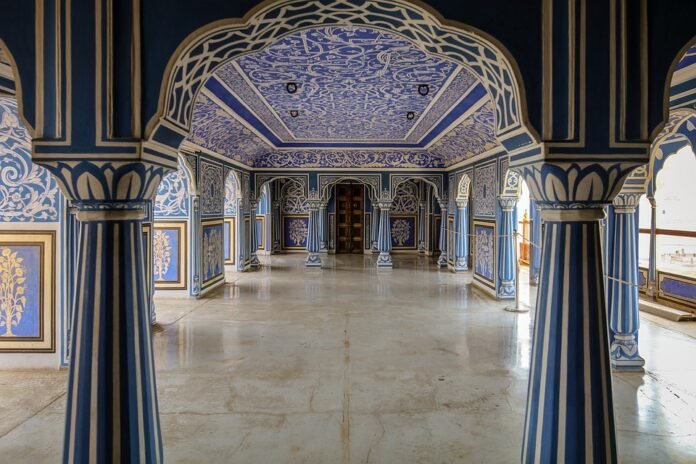Of course. Here is an article on the complexities of India.
Decoding India: Understanding the Complexities of a Diverse Nation
How does one begin to understand a nation that is less a country and more a continent? India is not a monolith; it is a kaleidoscope. With every turn, it presents a new pattern of colours, beliefs, and contradictions. To attempt to define India with a single sentence is to fail before you begin. Instead, one must approach it as a grand, intricate text, ready to be decoded one layer at a time.
For the uninitiated, India is often a sensory overload—a vibrant cacophony of sights, sounds, and smells. It’s the scent of jasmine and marigolds mingling with diesel fumes, the resonant call to prayer from a mosque harmonizing with the clang of temple bells, and the sight of a gleaming skyscraper casting its shadow over a centuries-old monument. These juxtapositions are not exceptions; they are the very essence of the Indian experience.
To truly decode this nation, we must explore the core pillars of its staggering complexity.
The Tapestry of Languages and Cultures
Imagine a country where the language, cuisine, dress, and customs can change entirely every few hundred kilometres. That is India. With 22 official languages and over 1,600 dialects spoken across its vast expanse, India’s linguistic diversity is more comparable to the continent of Europe than to a single nation-state.
A journey from the snowy peaks of Kashmir in the north to the tropical shores of Kerala in the south is a journey through different worlds. In Punjab, you’ll encounter the hearty, wheat-based cuisine and the vibrant Bhangra dance. Travel east to Bengal, and the culture shifts to a love for literature, fish curries cooked in mustard oil, and the sweet melodies of Rabindra Sangeet. The south celebrates its own classical traditions, with rice as a staple, and festivals like Pongal and Onam that are distinct from the northern Diwali or Holi. This cultural mosaic means that an "Indian" is never just an Indian; they are a Tamilian, a Gujarati, a Bengali, a Maharashtrian first—each identity a unique thread in the national fabric.
The Spiritual Labyrinth
India is the birthplace of four of the world’s major religions—Hinduism, Buddhism, Jainism, and Sikhism—and is home to one of the world’s largest Muslim populations. Christianity has roots in India stretching back nearly two millennia, and vibrant communities of Jews, Parsis, and Baháʼís have found sanctuary here for centuries.
This is not just a statistical list. Spirituality in India is a lived, breathed reality. It is woven into the daily rhythm of life, from the morning puja (worship) in a Hindu household to the Friday prayers at a mosque. It dictates diets, festivals, social norms, and even calendars. This profound spiritual coexistence is one of India’s greatest strengths, a testament to its absorptive and pluralistic nature. Yet, it is also a source of friction, with religious identity politics remaining a potent and sometimes volatile force in its public life.
The Engine of Contradictions: Economy and Society
India is a land of stark, often bewildering, contradictions. It is a nuclear power and a hub of technological innovation, with cities like Bangalore and Hyderabad driving the global digital economy. At the same time, millions in its rural heartland live in conditions of profound poverty, their lives governed by the monsoon and ancient agricultural cycles.
You can witness a farmer ploughing his field with oxen just miles away from a state-of-the-art factory manufacturing satellites. This is the duality of modern India: one foot firmly in its ancient past, the other striding confidently into a technological future. This friction has given rise to a unique Indian trait known as jugaad—a frugal and flexible approach to innovation and problem-solving, born out of necessity but now celebrated as a form of grassroots ingenuity.
Socially, the nation grapples with the legacy of the caste system, a rigid hierarchy that, while officially outlawed, still casts a long shadow over social relations, particularly in rural areas. Juxtaposed against this is an aspirational, young, and increasingly globalized population, connected by smartphones and Western media, challenging old norms and forging new identities.
A Symphony of Governance
Governing a nation of 1.4 billion people with such immense diversity is perhaps the world’s greatest democratic experiment. Indian democracy is famously noisy, chaotic, and fiercely contested. It is a system where hundreds of political parties, representing a dizzying array of regional, linguistic, caste, and religious interests, vie for power.
While often criticized for its inefficiency and bureaucracy, this sprawling democratic structure acts as a crucial safety valve. It gives a voice—however faint at times—to the myriad groups that make up the nation, forcing compromise and ensuring that no single identity can dominate the whole.
Conclusion: The Ongoing Conversation
Decoding India is not about arriving at a final, neat conclusion. It is about embracing the paradoxes and appreciating the constant churn. India is not a static entity to be understood, but a living, breathing conversation among a billion different voices. It is ancient and new, rich and poor, spiritual and material, all at once.
To understand India is to understand that its chaos has a rhythm, its diversity has a unifying soul, and its complexities are not a flaw but its most defining feature. The only way to truly decode it is to listen to its many stories, acknowledge its contradictions, and marvel at the symphony that emerges.

